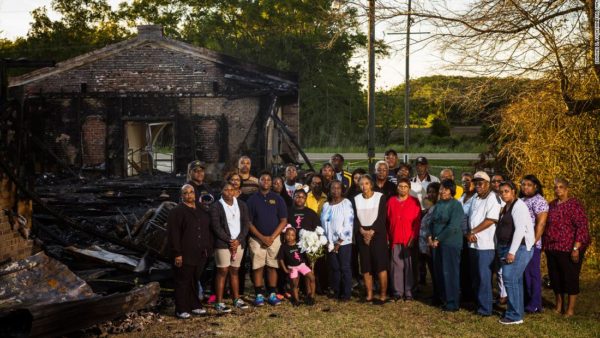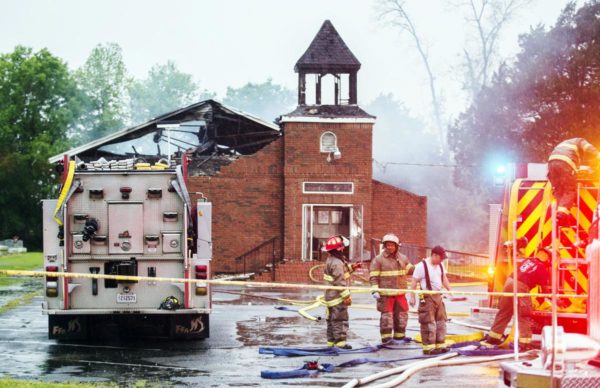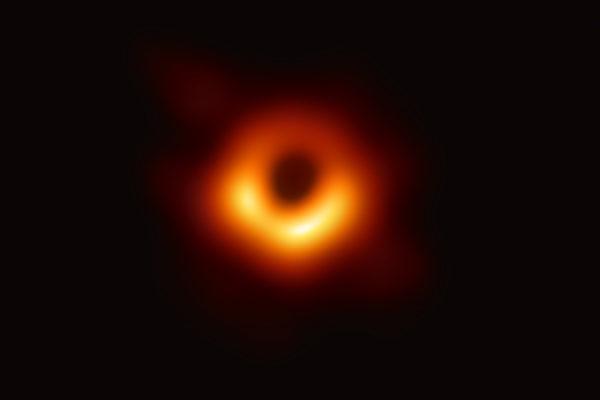Notes
Louisiana Church Fires in the Shadow of All Else

Edmund Fountain’s powerful parishioner portrait calls out: “We are still here!”
Between March 26 and April 4, three historically Black churches in Louisiana’s St. Landry Parish were set ablaze, targeted by a twenty-one year-old white man who local authorities have charged, and federal authorities will charge, with arson and hate crimes. Of course, when it comes to churches burning, it was the inferno at the Notre Dame cathedral in Paris that captured media attention this week. Since then, the relative silence and invisibility of St. Landry Parish has become part of the story.
While the three church attacks are less than a month old, they are part of a long history of racial terrorism in the United States. Not unlike the white mobs that, only a few generations ago, lynched African Americans to assert white supremacy, others have used arson as their preferred strategy of inflicting racial terror: burning crosses, homes, and Black-owned businesses became spectacles of white terrorism designed to eliminate African Americans from “whites-only” spaces. And because they are places of love, hope, redemption, and salvation, African American churches have been targeted with special intensity and regularity.
On April 10, just eight days after their church burned, worshipers from Greater Union Baptist Church in Opelousas stood for New Orleans photojournalist Edmund D. Fountain in front of the church’s remains. Fountain, on assignment for CNN, said he wanted “to portray them as a community” and that he was “really honored” by the number of people who responded to his invitation to be photographed.
Part of what makes his image so compelling is how it uses the conventions of the group portrait to valiantly refute the terrorist’s aim to intimidate, to disrupt daily life and civic institutions, and to cultivate fear that it might happen again.
In the photograph, the men, women, and children look directly into the camera’s lens. They demand to be seen and that, by looking back, we bear witness to the continued trauma and injustice of anti-Black racism. Doing so has the capacity to activate a sense of urgency, and it insists that we make a moral judgment.
Fountain could have photographed just the burned remains of the church, but by showing us the specific people who enlivened it and who are affected by its ruin, we get a much clearer vision of the event.
Even the group’s composition conveys a refusal of fear, intimidation, and disruption. The congregants stand so close to each other that their shoulders often overlap with those nearest, lending an unbreakable quality to the scene. Coupled with their direct gazes, the group’s united postures gracefully announce, “We are still here.”
The lush green trees that populate the background and the warm light that glows on the right side of the frame evokes regeneration.The bouquet of white flowers up front, and the little girl holding them up, both speak to the group’s belief in beauty, growth, and the promise of tomorrow.
Like an extended family portrait, the image memorializes the group’s existence, and it rejects the arsonist’s intent by uniting all thirty people in the photograph as one body—intact, unbroken, undamaged. During a time marred by hate, the members of Great Union Baptist reveal the force of love.
And yet, Fountain’s photograph has circulated with much less frequency and visibility than Leslie Westbrook’s photograph of the remains of Mount Pleasant Baptist Church, which burned on April 4 in the same town as Greater Union Baptist.

This image reveals the direct aftermath of arson, and by featuring the church at the center, it tells a story not about parishioners but about a damaged structure.
This photograph, compared to Fountain’s portrait, issues no challenge to bear witness. Instead, it asks for a partial mode of viewing in which church buildings, but not the people that inhabit them, are the subjects to mourn.
Yes, the devastation at Mount Pleasant Baptist is horrific, but as we look at this photograph we are in a sense relieved of the burden of staring into the eyes of those targeted by hate. In their place, it offers the firefighters and first responders as heroic, comforting figures. The parishioners are absent, however, leaving us only to imagine the people who were spared. Even the familiar string of yellow caution tape, stretched across to protect public safety and secure the crime scene, symbolically restricts viewers from accessing the humanity behind the ruin.
Fountain’s photograph does not depict a church targeted; Westbrook’s photo provides that visual. And yet, if we choose to look, we can witness the durable faith, power, and resilience of African American Christians. Unfortunately, the Louisiana church fires continue to be under-covered in the visual news. In spite of that inattention, however, the thirty parishioners of Greater Union Baptist Church are living out a story we can easily recognize in Fountain’s photo. They are here, and–resolute and unbroken as a church family–they will remain here.
— Katie Irwin
Photo 1: Edmund Fountain/CNN Caption: Members of the Greater Union Baptist Church stand for a portrait in front of the ruins of their church in Opelousas, Louisiana, on April 10. Photo 2: Leslie Westbrook/The Advocate via AP. Caption: Firefighters and fire investigators respond to a fire at Mount Pleasant Baptist Church on April 4 in Opelousas, Louisiana.


Reactions
Comments Powered by Disqus